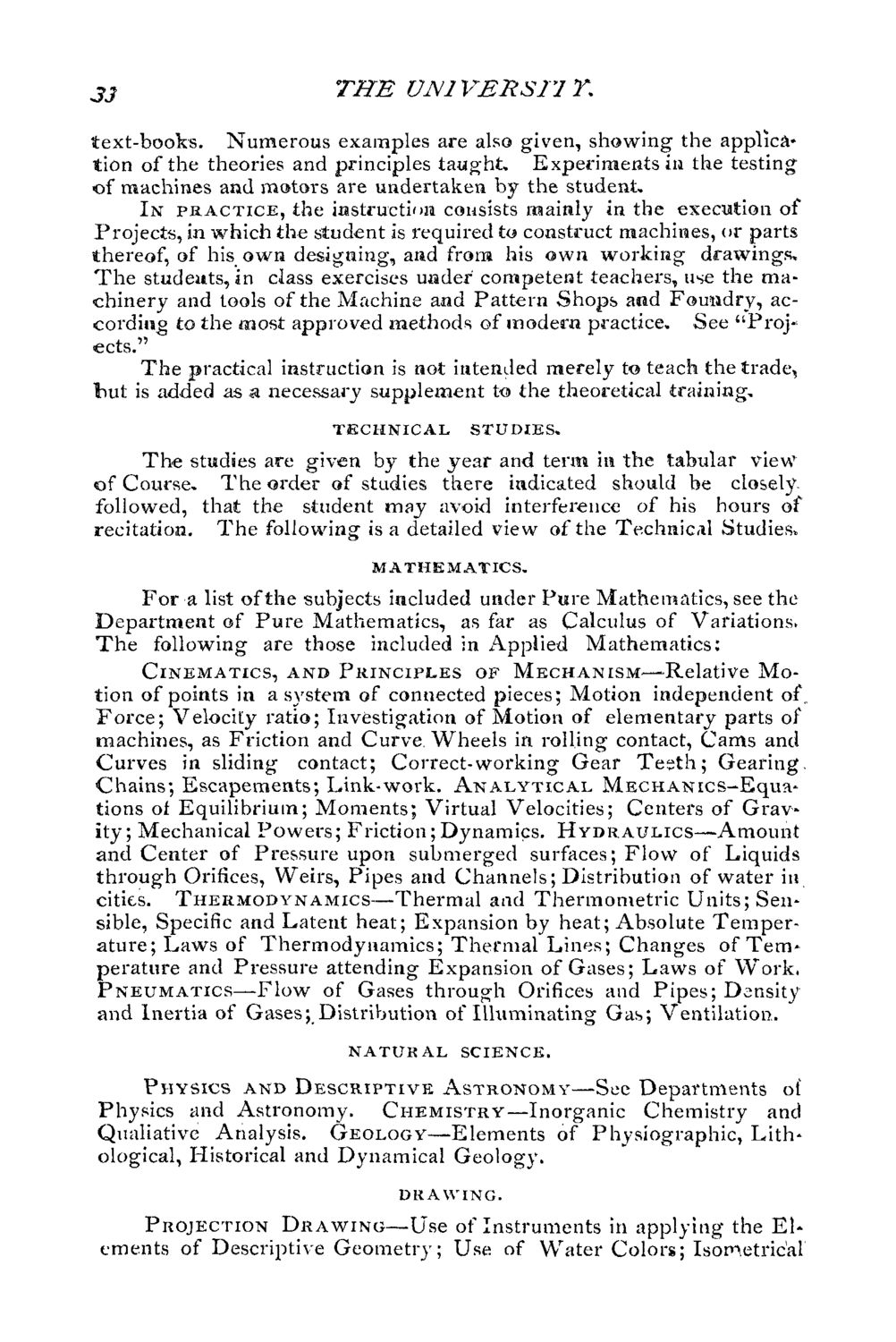Caption: Course Catalog - 1875-1876
This is a reduced-resolution page image for fast online browsing.

EXTRACTED TEXT FROM PAGE:
JJ THE text-books. Numerous examples are also given, showing the application of the theories and principles taught. Experiments in the testing •of machines and motors are undertaken by the student. IN PRACTICE, the instruction consists naainly in the execution of Projects, in which the student is required to construct machines, or parts thereof, of his own designing, and from his own working drawings. The students, in class exercises uader competent teachers, use the machinery and tools of the Machine and Pattern Shops and Foundry, according to the oiost approved methods of modern practice. See "Projects." The practical instruction is not intended merely to teach the trade, but is added as a necessary supplement to the theoretical training. TECHNICAL STUDIES. The studies are given by the year and term in the tabular view of Course. The order of studies there indicated should be closely, followed, that the student may avoid interference of his hours of recitation. The following is a detailed view of the Technical Studies. MATHEMATICS. For a list of the subjects included under Pure Mathematics, see the Department of Pure Mathematics, as far as Calculus of Variations. The following are those included in Applied Mathematics: CINEMATICS, AND PRINCIPLES OF MECHANISM—Relative Mo- tion of points in a system of connected pieces; Motion independent of. Force; Velocity ratio; Investigation of Motion of elementary parts of machines, as Friction and Curve. Wheels in rolling contact, Cams and Curves in sliding contact; Correct-working Gear Teeth; Gearing. Chains; Escapements; Link-work. ANALYTICAL MECHANics-Equations of Equilibrium; Moments; Virtual Velocities; Centers of Gravity; Mechanical Powers; Friction;Dynamics. HYDRAULICS—Amount and Center of Pressure upon submerged surfaces; Flow of Liquids through Orifices, Weirs, Pipes and Channels; Distribution of water in cities. THERMODYNAMICS—Thermal and Thermometric Units; Sensible, Specific and Latent heat; Expansion by heat; Absolute Temperature; Laws of Thermodynamics; Thermal Lines; Changes of Temperature and Pressure attending Expansion of Gases; Laws of Work, PNEUMATICS—Flow of Gases through Orifices and Pipes; Density and Inertia of Gases; Distribution of Illuminating Gas; Ventilation. NATURAL SCIENCE. PHYSICS AND DESCRIPTIVE ASTRONOMY—See Departments of Physics and Astronomy. CHEMISTRY—Inorganic Chemistry and Qualiative Analysis. GEOLOGY—Elements of Physiographic, Lithological, Historical and Dynamical Geology. DRAWING. PROJECTION DRAWING—Use of Instruments in applying the El- ements of Descriptive Geometry; Use of Water Colors; Isometrical
|